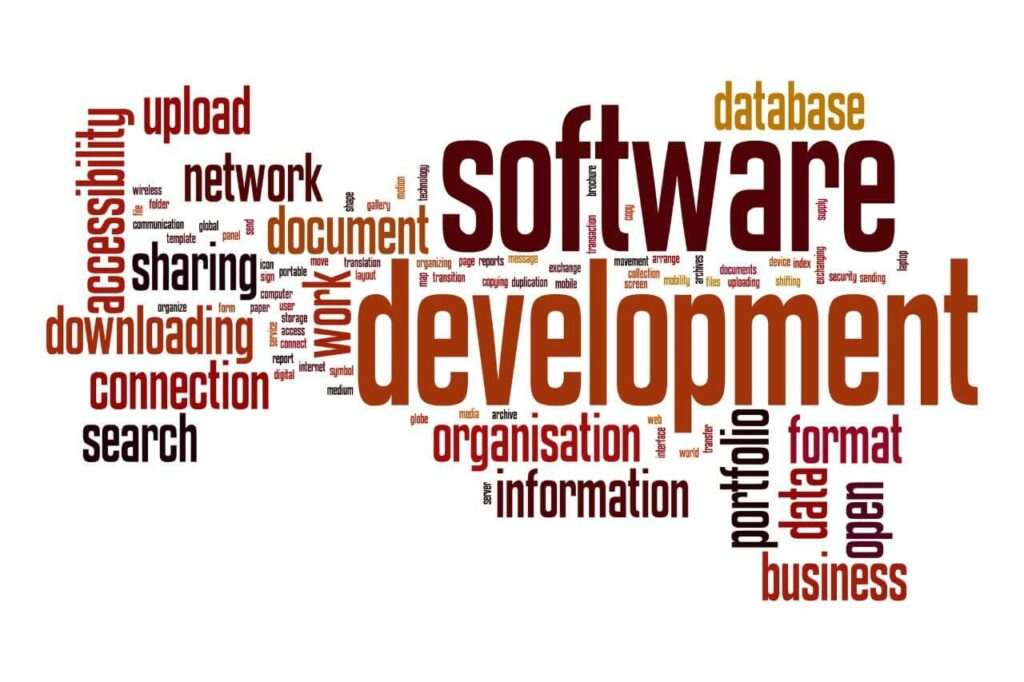Scrum is a lightweight framework that helps in the creation of value by creating adaptive solutions to complex problems.
The framework has different elements which each serve specific purposes that are key to the overall value and results realized with Scrum.
For Scrum to work, it’s held up by pillars that include inspection and adaptation. These pillars require certain elements to enable them and these are Scrum events or ceremonies.
Sprint Review and Sprint Retrospective are two of the five key ceremonies in Scrum that take place at the end of every Sprint.
Both of these ceremonies seem quite similar, but they happen to serve distinct purposes in the Agile development life cycle.
Failure to understand the uniqueness of the individual events can lead to misalignment and inefficiencies in the development process.
In this article, you’ll learn the key differences between Sprint Review and Sprint Retrospective and how they help Agile teams improve their processes and deliverables.
What is a Sprint Review?
Sprint Review is a Scrum ceremony done to inspect the Sprint outcome and adapt accordingly.
During this event, the team presents the deliverables from the concluded Sprint to key stakeholders for examination toward the Product Goal.
This event is done at the end of the Sprint and should be a hands-on demonstration of the product. From this review, feedback is gotten and should be incorporated into the Product Backlog.
Sprint Reviews are time-boxed to four hours for a one-month Sprint, and two hours for a two-week Sprint.

What is the Purpose of the Sprint Review?
The primary purpose of the Sprint Review is to demonstrate the work done during the Sprint to the Product owner and stakeholders.
During the review, the team showcases the working Product Increment, and the stakeholders provide feedback.
With the feedback, the team can further refine and prioritize the Product Backlog and identify areas for improvement.
What is a Sprint Retrospective?
Sprint Retrospective is the last event in a Sprint by the team.
During this event, the Sprint is analyzed on how it went with respect to people, processes, tools, interactions, and the Definition of Done (DoD).
From this event, the team identifies what went well during the Sprint and what didn’t. From this, helpful changes are identified and may be incorporated into the Sprint Backlog for the next Sprint.
This event is time-boxed to three hours for a one-month Sprint and shorter for Sprints for a shorter duration.

What is the Purpose of the Sprint Retrospective?
The purpose of the Sprint Retrospective is for the team to reflect on the just concluded Sprint and identify potential improvements to their performance and processes going forward.
During this event, the team takes time to reflect on what went well during the Sprint, what could have gone better, and what they can do differently in the Sprint for better performance.
Difference Between Sprint Review and Sprint Retrospective
Sprint Reviews are held at the end of a Sprint to highlight the work completed during the sprint and to elicit feedback from stakeholders.
It’s a chance for the team to show off their progress and get feedback from the Product Owner, customers, and other stakeholders.
The Sprint Review focuses on the product and how it aligns with the stakeholders’ requirements and expectations.
The Sprint Retrospective, on the other hand, is held to reflect on the team’s processes during the concluded Sprint and identify areas for improvement.
It’s a chance for the team to reflect on their performance, identify what went well and what didn’t, and make changes for the next sprint.
The Sprint Retrospective focuses on the team’s processes, communication, and collaboration, as well as ways to improve their work.
Read Also: Extreme Programming (XP) vs Scrum: A Comparison of Agile Methodologies

Sprint Review vs Sprint Retrospective Comparison
1. Purpose
The purpose of the Sprint Review is to demonstrate the working software to stakeholders and receive feedback, while the purpose of the Sprint Retrospective is to reflect on the team’s performance during the sprint and identify areas for improvement.
2. Attendees
The Sprint Review is attended by the Product Owner, Scrum Master, Developers, and stakeholders, while the Sprint Retrospective is attended only by the Scrum Master and Development Team.
3. Frequency
The Sprint Review is conducted at the end of each sprint, while the Sprint Retrospective is also conducted at the end of each sprint but after the Sprint Review.
4. Time-Box
The Sprint Review is time-boxed to a maximum of four hours for a one-month sprint, while the Sprint Retrospective is time-boxed to a maximum of three hours for a one-month sprint.
5. Focus
The Sprint Review focuses on the product and customer feedback, while the Sprint Retrospective focuses on the team and process improvement.
6. Output
The output of the Sprint Review is feedback and insights from stakeholders, while the output of the Sprint Retrospective is a list of actionable items to improve the team’s performance in the next sprint.
7. Approach
The Sprint Review is more of a formal event, where the team demonstrates the working software to stakeholders, while the Sprint Retrospective is more of an informal event, where the team reflects on their performance and discusses how to improve it.
Best practices for Running a Sprint Review
Running a successful Sprint Review that’s productive requires proper planning and execution. These are some of the best practices for running a Sprint Review:
1. Plan Ahead
This can be done by scheduling the Sprint Review meeting in advance and sending reminders to team members.
All relevant stakeholders should be notified of the event and there should be clear goals and agenda.
2. Prepare the Demo
A critical part of the Sprint Review is the demo. This should be prepared in advance, and the team also should be prepared to showcase the complete Product Increment to the stakeholders that it meets the Definition of Done (DoD).
3. Encourage Participation
It’s important to encourage the participation of stakeholders in the Sprint Review as it’s an opportunity to get feedback.
The environment should be conducive enough for the stakeholders to feel comfortable enough to share their ideas and thoughts.
4. Keep it Focused
It’s very easy in meetings to get sidetracked by topics that aren’t related to the overall purpose. Set an agenda and stay focused on it, and keep the meeting within the time-box limit.
5. Take Notes and Follow-Up
Ensure notes of the feedback from the Sprint Review meeting are taken and the action items are followed up on in a timely fashion.
6. Celebrate Success
Celebrate the team’s accomplishments and the Sprint’s successful completion. Recognize individual contributions and team efforts, as well as any obstacles overcome.
Read Also: Lean vs Kanban: Understanding the Key Differences in These Agile Methodologies

Best Practices for Running a Sprint Retrospective
Sprint retrospectives provide a platform for the Scrum team to reflect on their performance in the concluded Sprint, and identify ways to improve their performances in the next Sprint.
To ensure that the event achieves this goal, here are some best practices to keep in mind:
1. Set the Stage
Begin the retrospective by reminding the team of the meeting’s purpose and ground rules. This ensures that everyone is on the same page and that the conversation remains focused.
2. Create a Safe Space
The retrospective should be a judgment-free zone where team members can freely share their thoughts and ideas. Set the tone for open and honest communication by modeling vulnerability.
3. Focus on what went Well
While it is vital to identify areas for improvement, it’s also critical to recognize and celebrate successes.
Begin the retrospective by asking team members to share their thoughts on what they thought went well during the sprint.
4. Identify Areas for Improvement
After the team has shared its successes, it’s time to focus on areas for improvement. Encourage everyone to share their ideas, but keep the discussion focused and actionable.
5. Prioritize Action Items
Once the team has identified improvement opportunities, the action items must be prioritized.
Encourage the team to prioritize the most important items and devise concrete steps to improve in those areas.
6. Follow Up
Following the retrospective, it’s important to follow up on the action items and hold the team accountable for progress.
This will help to ensure that the team keeps improving and that the retrospective remains an effective tool for continuous improvement.
Conclusion
Understanding the purpose and differences of these Scrum events is key to your ability to utilize the framework to deliver value.
Sprint reviews and sprint retrospectives are key avenues to inspect the work done by the team and its performance and adapt according to feedback for improved performance and productivity.
FAQs
What are the Five Scrum Events?
The five Scrum events or ceremonies are Sprint, Sprint Planning, Daily Scrum, Sprint Review, and Sprint Retrospective.
What Comes First Sprint Review or Sprint Retrospective?
The Sprint Review comes before the Sprint Retrospective.
The Sprint Review is conducted at the end of each Sprint to showcase the completed work to the stakeholders, while the Sprint Retrospective is conducted after the Sprint Review to evaluate the team’s performance and see ways of improvement for the next Sprint.
Who Runs the Sprint Review?
The Sprint Review is run by the Product Owner and Developers. The Scrum Master facilitates the meeting but doesn’t run it.
Is a Sprint Review a Demo?
Yes, a Sprint Review in Agile is a demo where the team presents the work completed in the Sprint to stakeholders and gathers feedback.
What are the 3 Sprint Retrospective Questions?
The three primary Sprint Retrospective questions are:
1. What went well during the Sprint?
2. What didn’t go well during the Sprint?
3. What could be improved in the next Sprint?
Is the Scrum Master Mandatory in Sprint Review?
Yes, the Scrum Master is mandatory in the Sprint Review as they facilitate the event and ensure that it’s conducted in an efficient and productive way.





